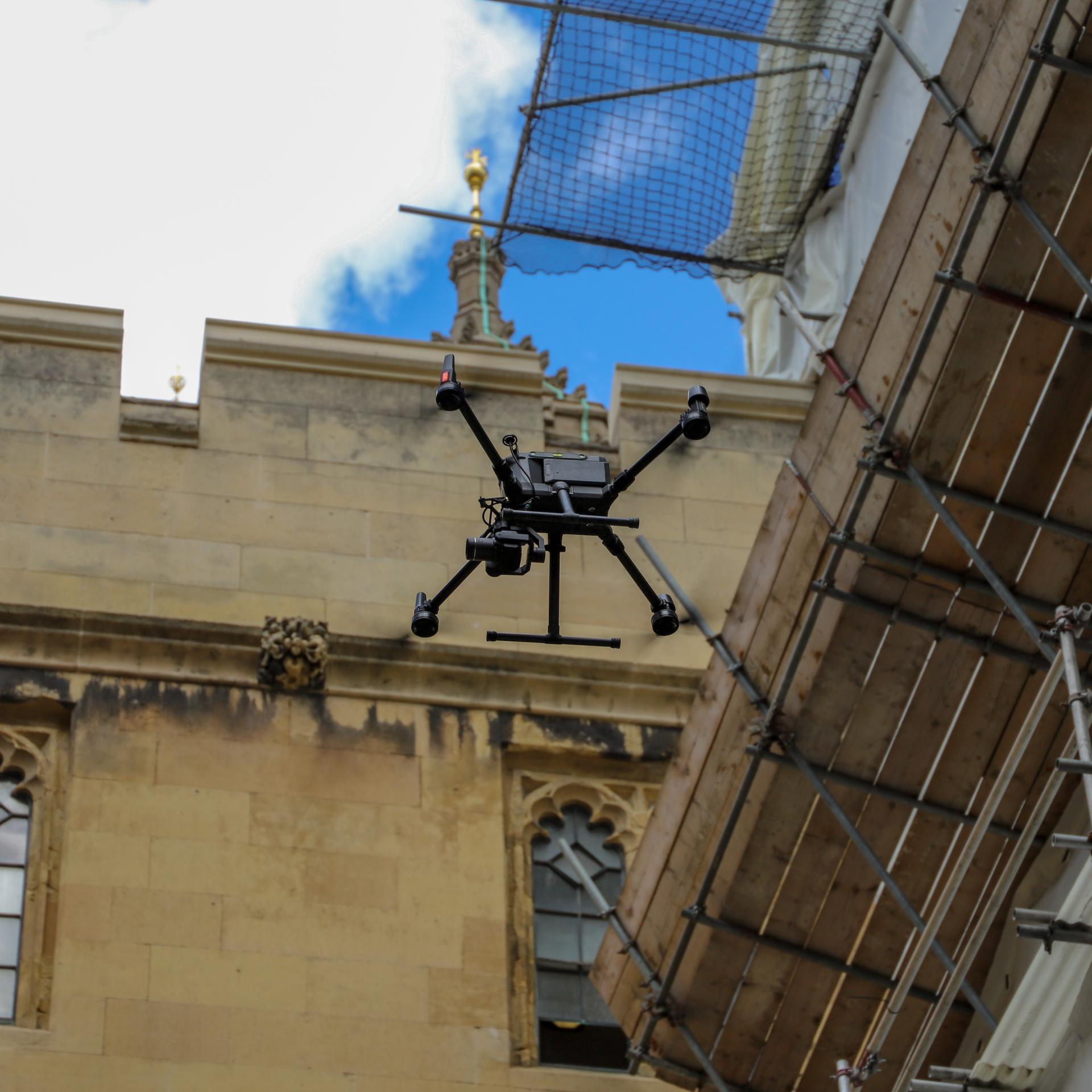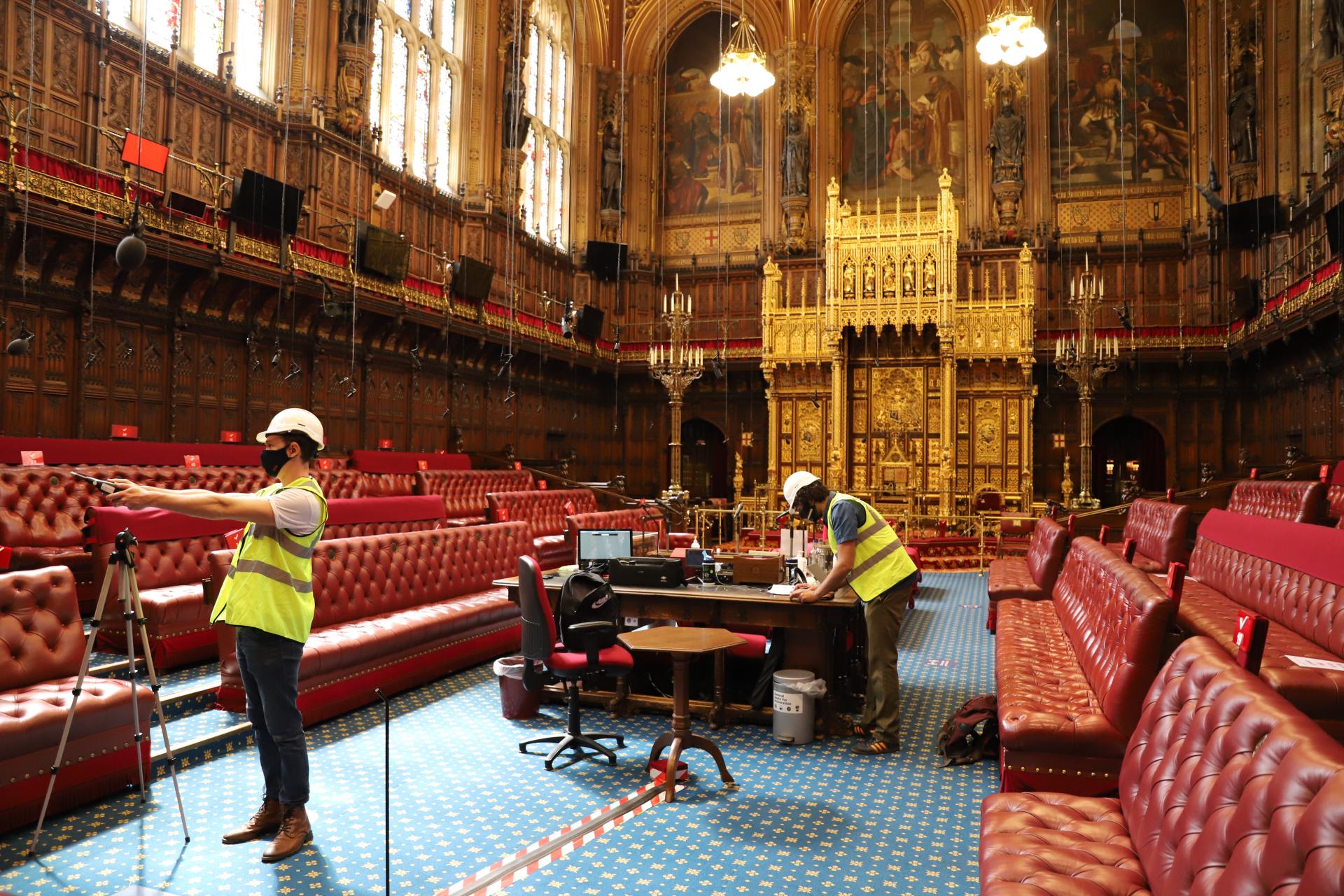Restoring the Palace
A Major Infrastructure Project
Designing for a building as old and complex as the Palace isn’t easy, and we don’t have complete plans we can work from. To restore the Palace, we first need to understand it.
Surveys & 3D Models
The Delivery Authority has carried out over 50,000 hours of intrusive survey activity to help us better understand the condition of the building. This work covers all aspects of the Palace; looking at ground conditions, floors and ceilings, heritage items, and air quality. We have also been assessing fire risk, asbestos, mechanical and engineering services, sewage and drainage, heating and ventilation and accessibility. This information is used to inform detailed architectural designs on every aspect of every building.
The Delivery Authority is using cutting edge digital models to map our survey information digitally and create a 3D digital map of every aspect of the Palace, for the first time, which will inform the scope of works and how we do things in the future. This rich data is a single source of information and replaces thousands and thousands of drawings and files.
Types of Surveys
To date the R&R Programme has spent thousands of hours carrying out over 90 different types of survey to understand the make-up, condition, underlying ground conditions and functionality of the Palace.
For each on-site survey, there is a complex discovery process that precedes it, starting with an outline scope, which then leads on to desk studies, such as researching historical archives, and non-intrusive surveys. Non-intrusive surveys can include site walkarounds and visual data gathering, as well as making requests of Parliament for information that they may already hold relating to the proposed site. A breadth of multi-disciplinary experts in design, engineering, conservation and construction are consulted along the way and if further information is required, a detailed scope is produced in preparation for the intrusive survey.
Here’s a snapshot of just some of the types of Surveys we’ve been carrying out across the Palace of Westminster.
Photogrammetric
Through the use of drones, this survey produces a comprehensive and detailed photographic record of all of the external facades and roofs of the Palace of Westminster. By recording the current condition of the Palace’s exterior, we can develop repair strategies, to inform early design proposals for R&R.
Ground Investigations
By drilling boreholes, we can gather critical data on stratigraphy and groundwater conditions of the Palace, which is fundamental in helping us predict ground movements when R&R works begin. This allows us to lay down strategies to prevent excessive distortion to the structure of the Palace, and to decide which construction techniques we will need to use when the main works begin.
Pull Out Tests
Existing window glazing has proven to perform poorly for energy efficiency, acoustic dampening, and blast protection. Pull Out tests assess the condition and strength of the masonry surrounding the glazing to inform plans for enhancing its performance capability.
Vibration Monitoring
Heritage assets, stonework and other aspects of the building fabric are vulnerable to the impact of vibration, particularly the kind generated in construction work which is repetitive and cumulative across an extended period of time. This can increase the rate of deterioration of these fundamental parts of the Palace. This survey enables us to establish a baseline to develop tolerance thresholds, all of which will inform future construction methodology.
Building Intrusive Surveys
Building intrusive surveys involve removing and sampling bricks and mortar to understand more about their condition and composition. More than 150 spaces across the Palace have been subject to these checks.


